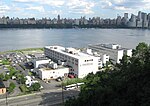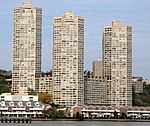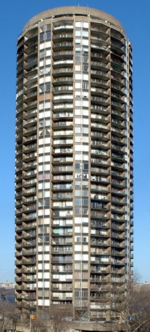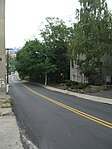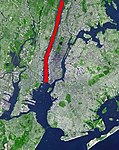Palisades Medical Center

Palisades Medical Center (PMC) is a 186-bed hospital located in North Bergen, New Jersey, United States, that serves a population of 400,000 in Hudson County and in Southern Bergen County. The non-profit medical center is part of the Hackensack Meridian Health Network. Connected to the hospital is The Harborage, a 247-bed nursing home and rehabilitation center. In 2016, PMC had more than 1,300 employees, Palisades is the largest employer in its service area and it had an annual operating budget of approximately $150 million.The New Jersey Hospital Association (NJHA) recognized Palisades Medical Center with its Community Outreach Award in 2011 for a program that serves residents who may not get needed healthcare services due to socioeconomic and language issues. Palisades Medical Center's community outreach and education programs are funded in part by Abbott Nutrition, the Aetna Foundation, The Provident Bank Foundation, Schering-Plough Corporation, TD Charitable Foundation and Toshiba America Medical Systems, Inc.
Excerpt from the Wikipedia article Palisades Medical Center (License: CC BY-SA 3.0, Authors, Images).Palisades Medical Center
River Road,
Geographical coordinates (GPS) Address Phone number Website External links Nearby Places Show on map
Geographical coordinates (GPS)
| Latitude | Longitude |
|---|---|
| N 40.7938 ° | E -73.9965 ° |
Address
Palisades Medical Center
River Road 7600
07047
New Jersey, United States
Open on Google Maps
